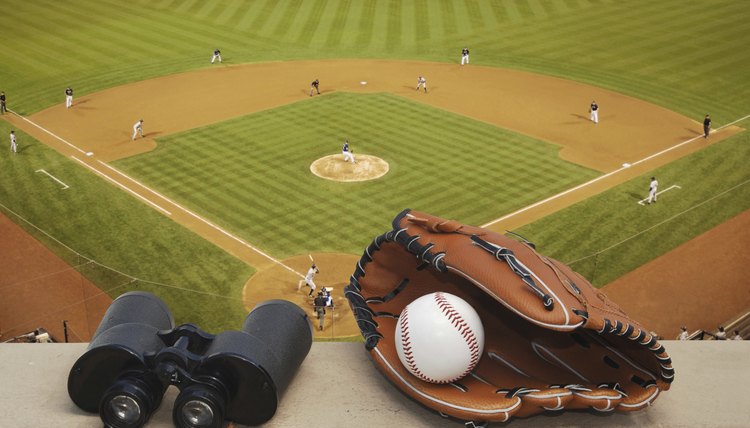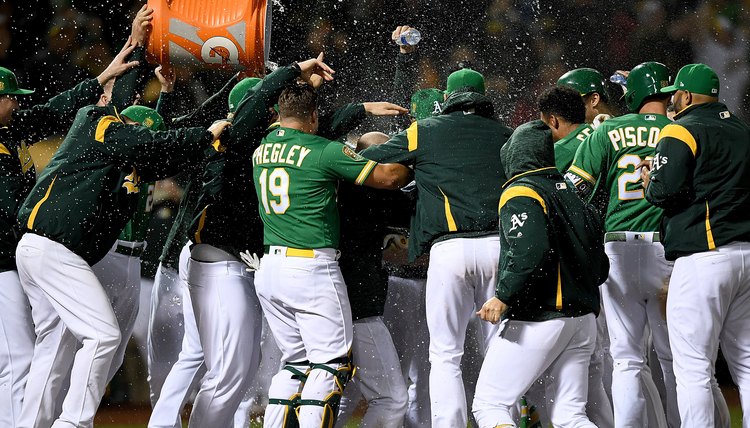The Average Length of Major League Baseball Games

Baseball is fundamentally different from most popular North American sports in many ways; but one sets it apart in a huge way. Of the five major American sports, baseball is the only one without a clock. At the major league level, teams play nine innings to decide the game. If the game is tied after nine innings, the teams will play extra innings to determine a winner. In theory, baseball games could go on for as long as the game stays tied. Major League Baseball games, however, on average last around three hours.
How long is a Major League Baseball game? In 2022, an MLB game lasts three hours and six minutes.
How long is a Major League Baseball game?

james steidl/iStock/Getty Images
In 2022, the average game time for a nine-inning game was three hours and six minutes. This was down from three hours and 11 minutes, which was the average MLB game length in 2021.The average baseball game is about the same as the average NFL game and longer than the average NHL and NBA game.
What are the longest MLB games of all time?
The longest game in MLB history was a twenty-six inning tie between the now Los Angeles Dodgers and Atlanta Braves. The game was called due to darkness but, in 1920, MLB teams could tie so the game was not resumed. The Dodgers also have the longest postseason baseball game. During Game 3 of the 2018 World Series, the Dodgers and Red Sox would play for a playoff record eighteen innings, taking over seven hours to complete.
The longest game by time elapsed was a twenty five inning game between the Chicago White Sox and Milwaukee Brewers. It took eight hours and six minutes over two days before Harold Baines broke the tie in the bottom of the twenty-fifth with a home run for the Sox. The longest continuous game was a regular season matchup between the St.Louis Cardinals and New York Mets which took 7 hours and twenty-five innings.
What are the concerns about pace of play?
Many experts and baseball executives do not want the game to be played at too slow of a pace. Many small actions, like a batter stepping out of the batter's box or a pitcher taking his time while pitching, can slow the pace of play. If the game is full of constant action, a long play time is acceptable for many viewers. However, if the game has little action, pointless delays, or long meetings on the mound, fans can become annoyed. As a result, Major League Baseball (or MLB) officials have instructed umpires to keep games moving efficiently and instituted many new rules to control pace of play.
How has pace of play changed in the MLB?

james steidl/iStock/Getty Images
According to MLB.com, the average length of a Major League Baseball game in the year 2000 was 2 hours and 58 minutes. Major League executives were unhappy with the long length of games and began instituting new rules and measures to control pace of play. Major League Baseball got the results it wanted in ensuing years. The average time of a Major League Baseball game was 2 hours and 54 minutes 2001; 2 hours and 52 minutes in in 2002 and 2 hours and 46 minutes in 2003. But as the game has evolved, the average time has ballooned to nearly 3 hours and eleven minutes in the 2021 season. In fact, baseball games are longer than they have ever been over their nearly 130 year history.
What are the reasons for concern?
During the 1970s, the average time of a Major League Baseball game was approximately 2 hours and 30 minutes. The increase is related to several factors, including increased time between innings for TV and radio commercials. However, players also take longer between at bats and between pitches. With the average human attention span falling to eight seconds, many around Major League Baseball are worried that longer game times will fail to draw the attention of younger fans. Others worry that viewers will fail to watch games in full if they continue to stretch longer.
What pace of play rules have been instituted?
In 2023, the MLB instituted multiple new rules to help curb the inflating average play time of baseball games. The major rule change was the institution of the Pitch Clock, a rule instituted in Minor League Baseball in 2015. Under this rule, players will have 30 seconds before a new hitter must step to the plate. Pitchers will then have twenty seconds between pitches if there is nobody on base and fifteen if there are base runners. If the pitch is not started before the clock expires, it’s an automatic ball, whereas if the batter does not get set in that time, it’s an automatic strike.
Another pitching change is the limit on disengagements for pitchers. This means that a pitcher can only step off the rubber twice per plate appearance to call time or to attempt a pick off throw to first base, second base, or third. Pitchers can still pick off after this limit but will be issued a balk if the pick-off is unsuccessful.
References
Writer Bio
Blaise is a Freshman at the University of Missouri, studying Journalism at the world-renowned J school. He is the host of the Fast Five Podcast with his Childhood friend Sam Sinclair and interns with the Sports AI platform Pine Sports. He is a huge fan of the Kansas City Chiefs and the St Louis. Cardinals and hopes to cover them professionally in his near future.
